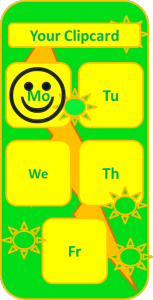Who needs canteen experiments and why?
In many European countries, schools offer food in one or the other form to children. This makes them an excellent driver to promote healthy eating among children.
Of course, one prerequisite is that schools offer high quality and nutritious food, but also the canteen environment is important. Usually, school canteens are not the most pleasant environments to enjoy your lunch – often they are cramped and noisy which makes children’s food choice rather stressful than relaxing and joyful. How shall kids then be able to make healthy choices?
Small steps can make a big difference here to nudge kids towards nutritious diets.
For example, experiments have shown that giving interesting and descriptive names to vegetables increases selection of the same by around 40% – 70%. For example, instead of calling carrots just “carrots”, why not call them “crunchy carrots” or give exiting names to broccoli like “power punch broccoli”?
Nudging children towards more fruit consumption can be as simple as making the fruits more attractive by serving them in colourful bowls – fruit sales increased in experiments by up to 102%.
If the target is that children generally eat less, decreasing plate size is one simple trick that nudges children (and adults) to put less on their plates and thus, consume less. Choosing the healthy option can be primed by using role models, for example, researchers in the US asked kids what Batman would eat and let then the kids choose. Most kids went for the healthier option as they assumed that a superhero would eat healthy. More examples can be found, for example, at http://smarterlunchrooms.org/.
These results are easy to implement at school canteens and have big effects on children’s food choice. However, before we can implement these small nudges, we need to know if they work in reality. This is where experiments come in: experiments enable researchers to isolate whether a nudge has an effect on food choice or not. Once we know exactly that the nudge works, we can combine it with other tools and means that work, for example with educational training in schools.
What do we do in the I.Family study?
 We carry out canteen experiments in primary schools with the target to enhance salad and vegetable consumption. We use a simple motivational stimulus: kids are introduced to a game where the rules are that they get a smiley if they choose a portion of salad and/or vegetables. These smileys can be collected over two weeks. How do we measure whether children eat more salad and/or vegetables? – Simply by measuring the kids’ food choices (and produced waste) before, during and after the game. In the end, we can find out whether the simple smiley is motivation enough to increase kids’ salad and/or vegetable consumption.
We carry out canteen experiments in primary schools with the target to enhance salad and vegetable consumption. We use a simple motivational stimulus: kids are introduced to a game where the rules are that they get a smiley if they choose a portion of salad and/or vegetables. These smileys can be collected over two weeks. How do we measure whether children eat more salad and/or vegetables? – Simply by measuring the kids’ food choices (and produced waste) before, during and after the game. In the end, we can find out whether the simple smiley is motivation enough to increase kids’ salad and/or vegetable consumption.
If this simple motivation works, many primary schools could use this little game – just a few times per year for a week or so. Research has shown that repeated kids’ exposure to vegetables and salads increases the probability that they are going to like it. You can even twist the game by introducing a competition on the class level, i.e., which class collects most smileys. The smiley game is cheap and simple to carry out – all the schools need is a smiley stamp or two and stampcards for the kids and not to be forgotten: enthusiastic teachers. To promote healthy food choices in children and strengthen the effects of nudges, the smiley as a reward can be easily combined with other efforts such as a healthy school week, nutrition as a topic in class or complement it by exciting names for vegetables and colourful bowls for fruits.








